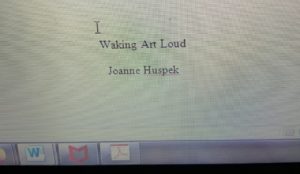The upside to never throwing any writing away? You will always have something to edit.
I didn’t participate in NaNoWriMo this year, but I didn’t have to. I have at least four (FOUR!) novels on my external drive in various states of disrepair. Each is about 85% complete, because if you NaNo, you don’t really end up with a full first draft, although 50K words + is a good start. Each year I give myself a month break from writing before putting on my editing hat, I may start again, but then something (anything) will get in the way.
As a result, I feel like the hoarder queen of incomplete works.
My task until the next NaNoWriMo: Get some of these from the partial manuscript to at least a workable first draft. I have an Editor for Life that has barely seen two words come out of me in the last five years. (Update: I sent him An Education for Addie, so he’s working on that one as I type. My goal is to get something else to him as soon as I get my first edit of Addie back.)
For my editing project, I’ve decided on my NaNoWriMo project of 2017. I’m good at constructing story lines but horrible at writing a catchy title. It was tentatively titled The Loud Sisters, until I decided to throw a brother in. Oopsy. The now working title is Waking Art Loud. It’s about five siblings (adults) who return to Detroit after their father dies, for the funeral. There are secrets all around, and the sibs are not as close as they would like to believe they are. Blood is definitely not thicker with this bunch. Death usually brings out the worst in people, or at least in the people I know.
Drama, drama, drama, and it all takes place in the space of a week.
I enjoyed writing this tale, but now that I’m editing, I find that I’m enjoying this part even more. Shocker! Editing is NOT usually my favorite task in the whole wide world, right next to writing an outline and a summary. I’m finding this edit a vacation from my historical, which is still fraught with a few historically incorrect items within the pages that I’ll get to in the second draft. It’s so much easier to write about the present day! The Loud children were rather wooden the first time around, and now I’m adding texture to their personalities. As with a lot of my stories, I have in my head which famous actor/actress will play each character. (I should give them a Pinterest board.) In addition, I have a vague idea as to how this will end; rest assured, someone will be unhappy at the end.
My ultimate goal for this edit is to finish by the first of this year, but I’m a heavy procrastinator so who knows. There’s a lot going on in this house, and it’s not just Christmas. I’ve curtailed any other art projects until I’m finished, and I’m nearly halfway through at this point.
I’m trying to limit my social media, although that’s hard. Facebook, you are crack. Twitter I gave up on a while ago, because I don’t enjoy wading in the cesspool. TV, that’s easy. I only have Hulu and Amazon Prime, so it’s a major moment to find something to watch, much less sit there for a couple of hours twiddling my thumbs.
And so I will leave you now, because I have dinner to make and words to get back to. See you on the other side.








 Image:
Image: 


